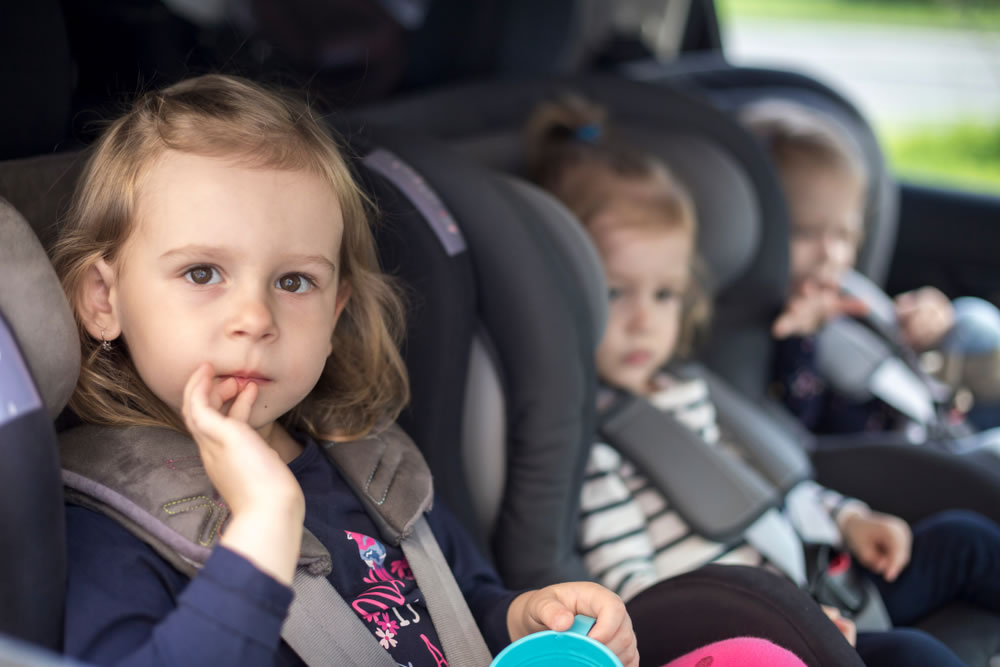Look before you lock: Guidance for providers transporting children
Published on Tuesday, 28 April 2020
Last updated on Wednesday, 21 October 2020

The tragic death of a three year old Queensland boy left unsupervised in a vehicle transporting children to their early childhood service has been a shocking reminder of just how vulnerable children are when left in hot vehicles.
Temperatures inside a locked vehicle can be 20-30 degrees hotter than conditions outside and the impact on young children can be catastrophic.
According to the Queensland Government, a child’s body temperature increases three to five times faster than an adult’s, placing them at greater risk of life-threatening heat stroke, brain injury, heart and lung failure and dehydration.
In addition to being physically unsafe for children, being left unattended in vehicles also leaves them unprotected and at risk of other harm.
In response to recent incidents, the Queensland Government has released a reminder for early childhood services about their legal responsibilities when transporting children and the importance of constant vigilance.
The government says: Approved providers, nominated supervisors and family day care educators have obligations under the Education and Care Services National Law (Queensland) to ensure children are adequately supervised at all times, and that every reasonable precaution is taken to protect children from harm and from any hazard likely to cause injury.
In addition, under Queensland law, it is illegal to leave a child under 12 unattended for an unreasonable time without making reasonable provision for their supervision and care.
Six quick steps to keep children safe
The government says now is the perfect time for early childhood providers to review their policies and procedures relating to the transportation of children, for excursions, and drop-off and pick-up times.
In addition, the government recommends the following six steps for ensuring children’s safety at all times:
- Make sure your roll records are accurate and up to date
Ensure your service's policies and procedures support accurate and up-to-date roll record keeping, including for those times when children are being dropped off and collected from the service and during excursions. Ensure staff receive an induction and are retrained regularly in these policies.
- Conduct both roll checks and head counts
Conducting roll checks as children enter and leave the vehicle is essential. Only conducting head counts can miss individual children as they arrive and depart, so you need to also tick off names on rolls, as well as count children. When completing roll checks, visually look at the child as they respond. If a child is not named on the roll, the educator should confirm with the service, school or the parent of the child whether they should be in care that day and update the roll accordingly.
- Thoroughly check the vehicle
Conduct a physical inspection of the vehicle to ensure all children have exited the vehicle, including a check under the seats, in the luggage racks and in any storage areas.
- Conduct another roll check and head count upon entry to the service
Once the children are in their respective room at the service or family day care home or venue, conduct another roll check and head count to ensure all children are accounted for.
- Check the vehicle again
Have a second person physically check the vehicle again, including checking under the seats, in the luggage racks and in any storage areas.
- If a child is unaccounted for
Remember, the penalties for failing to protect children by complying with state and federal laws are severe and the appropriate Regulatory Authority will take swift action in cases where there has been a breach. In addition to the legal consequences, the impact on families, the community and educators is devastating and long lasting.
Putting children's safety first is crucial is and by following these six short steps and by rehearsing them and ensuring all staff are aware of your policies and procedures you’ll be doing everything you can to protect the safety of the children in your care.
References:
Related Articles

National Principles for Child Safe Organisations
The National Principles for Child Safe Organisations have been endorsed by government and what this means for providers.

Kids Alive - Do the Five
Drowning prevention strategies for young children and a summer water safety reminder.

Improving the safety of Australian children
How early childhood education and care providers can strengthen and improve their current child safety systems in light of recent recommendations made by the Royal Commission.
